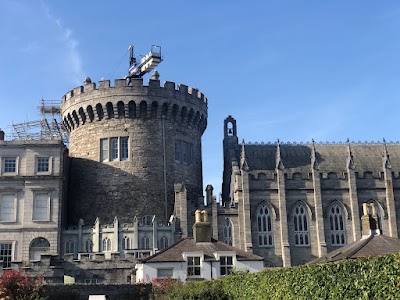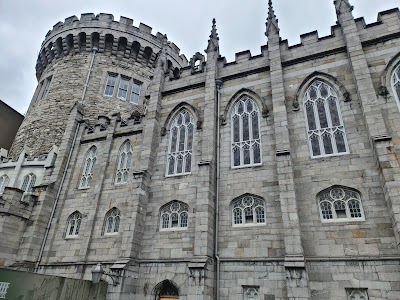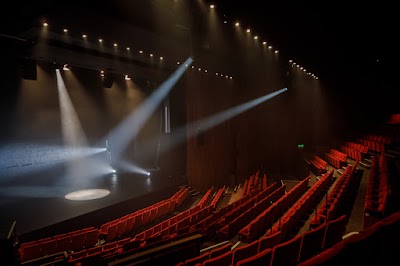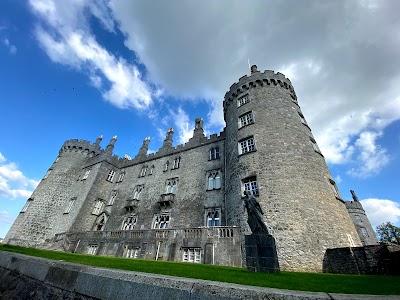Dublin Castle (Caisleán Bhaile Átha Cliath)
Overview
Dublin Castle: A Historic Gem in the Heart of Ireland
Dublin Castle is one of the most significant landmarks in the heart of Dublin, Ireland. Nestled in the province of Leinster, this historic fortress-turned-state function complex has played a pivotal role in Ireland's history and remains a powerful symbol of Irish heritage. Its origins trace back to the early 13th century when it was commissioned by King John of England, primarily serving defensive and administrative purposes. Built on the site of a Viking settlement, the castle adds an extra layer of historical significance to this magnificent structure.
The Architecture of Dublin Castle is a captivating blend of medieval, Georgian, and modern styles, reflecting its various phases of development. The Record Tower, the last remaining part of the original medieval castle, stands as a testament to its ancient origins. Over the centuries, the castle evolved from a medieval fortress to an opulent seat of the British administration in Ireland, serving as the residence of the Viceroy. Following Ireland's independence in 1922, Dublin Castle transitioned into a major ceremonial and governmental complex for the Irish State.
One of the highlights of any visit is exploring the State Apartments, which were once the residential quarters of the Viceroy of Ireland and now host presidential inaugurations and state functions. These rooms are adorned with lavish decorations, period furniture, and a stunning collection of artworks that offer a glimpse into the grandeur of Ireland's aristocracy. St. Patrick's Hall is particularly noteworthy, featuring an ornate ceiling and impressive portraits, making it one of the grandest rooms in the castle.
Visitors are also encouraged to explore the medieval structures and the beautiful Chapel Royal. Built between 1807 and 1814, this architectural marvel boasts intricate woodwork, stunning stained-glass windows, and a collection of historical heraldic banners. The exquisite Gothic Revival style of the Chapel Royal adds both spiritual and artistic depth to the castle’s allure.
Beneath the castle lies the intriguing Undercroft, where you can view the remains of the Viking fort and medieval castle walls, providing insight into the various historical layers buried beneath the surface. The remnants of the Viking settlement are particularly fascinating, highlighting Dublin’s ancient past long before the establishment of the castle.
Historically, Dublin Castle has been the backdrop for many significant events. It served as the British government's headquarters in Ireland until 1922 and witnessed pivotal moments, such as the surrender during the Easter Rising of 1916 and the handover of power when Michael Collins received the keys to the castle, marking Ireland's transition to independence. These events underscore the castle’s importance as a symbol of both conquest and liberation.
Another captivating aspect of Dublin Castle is its grounds, which include the serene Dubh Linn Gardens. These gardens serve as a tranquil oasis amidst the bustling city, providing a peaceful spot to stroll and reflect. The name 'Dubh Linn,' meaning 'dark pool,' refers to the black pool that once existed on this site, from which the city of Dublin derives its name.
Dublin Castle also houses several museums and galleries that enrich visitors' understanding of Irish culture and history. The Chester Beatty Library, located within the castle complex, is a world-renowned museum featuring an extensive collection of manuscripts, rare books, and decorative arts from Asia, the Middle East, North Africa, and Europe. This library offers a captivating journey through global artistic and cultural history.
For tourists, Dublin Castle provides a comprehensive visitor experience that seamlessly combines history, culture, and art. Guided tours are available for those who wish to delve deeper into the castle’s storied past, while informative plaques and exhibitions throughout the complex enhance the self-guided exploration. The castle frequently hosts events, from state functions to public exhibitions, making it a dynamic and engaging part of Dublin's cultural landscape.
In conclusion, Dublin Castle stands as a monument to Ireland's rich and complex history. A visit here promises a memorable journey through time. Whether you're a history buff, an art enthusiast, or simply a curious traveler, Dublin Castle offers a unique and compelling insight into the heart of Irish heritage. Its blend of historical significance, architectural beauty, and cultural treasures makes it an essential destination for anyone visiting Dublin.






